
EVAN BLAND
Omaha World-Herald
A wide look at Haymarket Park during a Lincoln Saltdogs game last June.
KENNETH FERRIERA, Journal Star file photo
The blank canvas has stared back at Will Bolt for nearly three years.
Look beyond the left-field line inside Haymarket Park and the Nebraska baseball coach sees an area that could provide everything Husker players need in one convenient hub. Instead of frequent drives to Memorial Stadium for nutrition and strength training, NU could build a cafeteria and weight room within a fly ball of its existing clubhouse and Gordon Training Complex.
Bolt began sketching ideas in the summer of 2021 after Nebraska won a Big Ten title and pushed the No. 1 national seed in an NCAA regional final. Husker administrators wondered aloud what it would be like to flatten the hill beyond left field and replicate the rowdy environment they witnessed at Arkansas of fans in lawn chairs and bleachers.
Since then, the only change has been the passing seasons. A visitors’ clubhouse building — mostly used for storage — still sits adjacent to the east of Nebraska coaches offices. A swath of open concrete still stretches from the home bullpen to the fenced-in east boundary of the concourse.
People are also reading…
The main reason why: The Huskers aren’t the only tenants of Haymarket Park, their home since 2002.
While the vast majority of college baseball venues belong to the school alone, Nebraska collaborates with the Lincoln Saltdogs, an independent professional franchise that has had equal say in the operations of the facility.
Why wouldn’t the Saltdogs sign off right away on NU’s vision? Because they have their own interests for the same area. It’s just the latest topic in a decades-long relationship that has endured through major changes on both sides including league affiliations, technology and economic climates.
“It’s stood the test of time when you look at where we’re at today and where it all started,” Saltdogs president Charlie Meyer said. “It’s pretty incredible. The package has worked.”
What about the future? A long-term contract remains in place for both teams through the 2035 season. Any significant ballpark alterations require not only financial resources but agreement between NU and the pro organization.
“We’re working together on those things with the Saltdogs to try to say, ‘Okay, how can we make this work for everybody?’” Bolt said in January. “It’s important — it is. It’s at least important to have something to show recruits to say, ‘Look, we’re moving the program forward by facility improvements.’”
Stan Meradith calls it a three-Ps partnership. In the world of ballparks, that’s as rare as a no-hitter.
Public. Private. Public. Meradith — a longtime architect who designed Haymarket Park among the 30-plus parks and complexes in his career — had never seen anything like it when the trio of entities first pitched the idea for a new venue in the summer of 1999. This could be a win-win-win.
Spurred on by early success under new coach Dave Van Horn, Nebraska wanted to invest in the sport and move on from a quirky and outdated Buck Beltzer Stadium. Meanwhile, Jim Abel — then president of the Lincoln-based construction company Nebco — was two years into his pursuit of bringing pro ball back to the state capital.
The City of Lincoln wanted an entertainment destination. Then-Mayor Don Wesley backed the venture while the city council voted unanimously in favor that fall. By April 2000, the sides had agreed to contribute roughly $10 million each for the project that eventually cost just under $30 million.
The 32-acre area by Salt Creek — once featuring a tow lot, a 911 tower, public works buildings and traversing railroad — opened as Haymarket Park in June 2001 when the Saltdogs beat the Sioux City Explorers 7-6. Softball’s adjacent Bowlin Stadium was completed at the same time. Other locations had been considered but none made more sense with the proximity to campus.
Meradith led the effort after building relationships through his work as architect for Nebraska football’s West Stadium renovation in 1999 that included adding 42 skyboxes. Once a farm kid from York, Meradith would later speak at national conferences for years about the power of so many coming together for a shared baseball vision.
“It was such an anomaly that you could get two public factions working with private to create an incredible project,” Meradith said. “It was really, really great. Perhaps one of the few places in the country that a project like this could happen was Lincoln, Nebraska, just because the people are so good. They all pull the same direction.”
But they don’t always have the same goals.
The first big hurdle was choosing a surface type. Athletic Director Bill Byrne wanted artificial turf, citing that Nebraska would need it when January practices began. Abel insisted that pro baseball teams must play on grass.
A solution arose when they learned of SubAir, a system used on soccer pitches in England to pump warm air to the roots of grass during the winter to keep from freezing. Haymarket Park became the first collegiate venue to use it.
Other decisions were collaborative too. Abel had the idea to orient the park due east from home plate to third base — providing a scenic downtown view including Memorial Stadium and a bustling railyard — in a 90-degree difference from most fields looking north.
The general design emerged after party reps traveled the country gathering ideas and asking others what they would have done differently with their own venues. Others later visited Lincoln to ask about the setup that includes berm seating down the foul lines and in the outfield. Penn State’s Medlar Field and Texas’s Disch-Falk Field include elements based directly on Haymarket Park.
Meradith didn’t fully realize the reputation of the Lincoln field until he took a call from legendary Texas coach Augie Garrido, whose Longhorns were a national power and College World Series regulars in the mid-2000s.
“His remark was, ‘I want one just like Nebraska’s,’” Meradith said. “That’s a pretty cool endorsement.”
Nearly a quarter century after it was written, the agreement that formed a metaphorical three-legged stool still stands with no edits.
Meyer has a copy of Ordinance No. 17627 somewhere, but he hasn’t referenced it in years. Neither the Saltdogs, the Huskers nor the city have had reason to amend the 46-page document since its creation in February 2000 that lays out rights and responsibilities for each group.
The initial 35-year pact runs through the 2035 season and has no opt-outs or look-ins. After that, tenants will have seven five-year options to extend the partnership. Language acknowledges that each party is “acting on its own behalf” and in charge of its own events “according to its own means and methods.” Both lease from the city — which owns the land and the ballpark — but can largely make desired changes with only the other’s consent.
“It’s worked really well,” Meyer said. “We’ve learned a lot but I think the other side of it is we did all the right things on the front end by putting agreements together.”
The Saltdogs and Huskers — with offices on the first-base side and third-base side, respectively — have turned a lineup of imaginings into reality over time. The pro team initiated terrace seating in right field for group activities. Nebraska unveiled the $4.75 million Gordon facility in 2011. The Saltdogs don’t use the building but were involved in meetings that decided to dig it into the ground to preserve sightlines from Interstate 180.
The Lincoln Saltdogs warm up before a game last June at Haymarket Park.
KENNETH FERRIERA, Journal Star file photo
Each team has its own separate concessions menu and gameday event staff. The grounds crew works for the Saltdogs, who bill Nebraska for work during the Husker seasons. Only the Saltdogs have sold beer, though that could change as soon as April with a positive Board of Regents vote.
Nebraska just put in additional cameras for video replay, which the Big Ten will mandate in 2025. It is also looking at a fall installation of LED lights — Bolt’s idea — for better illumination and light shows.
The sides shared costs to replace the grass surface a year ago and put up new netting for this spring. The Saltdogs schedule a road series each June on NCAA regional weekend to avoid a potential conflict — Nebraska last served as a postseason host in 2008.
As for the player-development expansion the Huskers are eyeing? The Saltdogs’ hesitation, Meyer said, is the area is already valuable to them.
The visitors clubhouse — equipped with a locker room and showers — is used by Lincoln opponents more than “show-and-go” college teams that mostly don’t linger before or after games. The concrete space is the setting for their sponsored “Fun Zone” inflatable kids playground. Plus, would any new buildings retain the aesthetic atmosphere of the park?
NU is thinking recruiting and development. The Saltdogs want revenue and entertainment. Coexisting, as usual, is the mission they share.
“If those areas are going away, we have to figure out someplace else to put them in the stadium,” Meyer said. “We want to make sure it’s going to fit within what we’re doing or what we’ve done — that’s what it comes down to. We’ll figure out it — it’ll get figured out. But those are the things we have to figure out.”
“With what we’re competing against — with what other Midwest schools have done with their facilities now — we’re kind of behind,” Doug Ewald said. “So we need to catch up with what we’re competing with.”
ANNA REED, THE WORLD-HERALD
Doug Ewald let out a breath and thought back on his longtime career in the business and finance world. The model at Haymarket Park is the first he’s seen of its kind. A unicorn.
Ewald, an executive associate athletic director and CFO, joined the athletic department in November 2021 and became NU’s Haymarket Park liaison last summer.
Nebraska is also considering what expansion could look like in center or right field, Ewald said. Meradith, the original architect, remains an unofficial consultant in the brainstorming process. The Huskers could turn over some of their current space — like their home clubhouse — to the Saltdogs depending on the final plan.
The field itself remains pristine and NU’s per-game attendance last season was top 10 nationally among Division I schools. But operationally, there’s room to grow. A press box built in the early 2000s has become too small to accommodate modern tech and gameday personnel.
“With what we’re competing against — with what other Midwest schools have done with their facilities now — we’re kind of behind,” Ewald said. “So we need to catch up with what we’re competing with.”
A centralized base for player development is becoming more common across college baseball led by the SEC but expanding regionally in recent years to the likes of Kansas State and Wichita State. Such setups are billed as attractive for prospects and critical for programs that — absent seven-figure budgets for name, image and likeness — win by helping their talent get better.
Exactly where Haymarket Park upgrades fall on the priority list for the athletic department is another question.
Football’s South Stadium renovation — set to begin in January — has an estimated cost of $450 million.
NU track and field hasn’t held an outdoor home meet in five years after it paused construction for the $16.5 million project north of the Devaney Center during the pandemic.
Another unknown is the long-term future of the Saltdogs, who have been under the leadership of Abel and Meyer their entire existence spanning six Husker athletic directors and four NU head coaches.
Part of the 35-year pact provides that should one party cease to field a team, all ballpark rights can transfer to the other.
The Lincoln franchise has been a stable exception among its peers. Of the 13 other Northern League teams it joined in 2001, seven have since relocated or folded or seen a season disrupted. Only three of the 10 original American Association squads from 2006 are still there, with others that came and went later on.
“I think a lot of people thought when this was put together that minor-league franchises start up and go away,” Meyer said. “People thought that in maybe five or seven years the Saltdogs wouldn’t be a part of this thing. I think it’s proven its point to be an asset for the city of Lincoln and the state of Nebraska. We brought professional baseball 50 miles closer to everyone out in Kearney and Grand Island.”
Bolt doesn’t want to invest in upgrades to the existing offices or locker room if something bigger is possible soon.

Nebraska infielder Will Bolt celebrates a Regional win over Southern Missouri State in 2002.
NOBUKO OYABU, THE WORLD-HERALD
Such projects make a difference, the coach said — and he speaks from experience.
As a former infielder prospect from Texas, he was one of half a dozen players who signed on with Nebraska in Van Horn’s first class in 1998 because of the commitment the school was making to baseball. Three College World Series teams soon followed. They helped pave the way for the Gordon facility and Big Ten titles in 2017 and 2021.
The Huskers and Saltdogs were working together then and still are. A constant in an era of change that isn’t over.
“We’ve got to continue to have those things in front of recruits to say ‘This is what we’re doing to move the program forward and to enhance your development at Nebraska,’” Bolt said. “To move Nebraska baseball to where we all want it to be, to where we’ve seen it be before and to have that consistent level of success, that plays a big part in that.”
Photos: Haymarket Park through the years

From left: Lil’ Red, James Moeser, Jim Abel and Don Wesley break ground for Nebraska’s new baseball stadium on April 12, 2000.
DAVE WEAVER, ASSOCIATED PRESS

The $32 million Haymarket Park under construction in 2001.
JEFFREY Z. CARNEY, THE WORLD-HERALD

An aerial photo of Haymarket Park’s completed construction taken on May 25, 2001.
JEFF BUNDY, THE WORLD-HERALD

The Lincoln Saltdogs plays its first game in the new Haymarket Park on June 1, 2001
PHIL JOHNSON, THE WORLD-HERALD

Nebraska baseball players carry mound to infield prior to batting practice at the teams’ new home — Haymarket Park — on June 4, 2001.
RUDY SMITH, THE WORLD-HERALD

Nebraska plays its first game in Haymarket Park on March 4, 2002. The Huskers beat UNK 23-1.
JEFF BEIERMANN, THE WORLD-HERALD

Nebraska hosted the Super Regional at Haymarket Park in 2002. The Huskers beat Richmond to advance to the College World Series.
JEFF BUNDY, THE WORLD-HERALD

Husker Joba Chamberlain dumps water on Nebraska coach Mike Anderson after their Super Regional win over Miami on June 11, 2005, at Haymarket Park. The win sent the Huskers to the College World Series.
MATT MILLER, THE WORLD-HERALD

The Alex Gordon Training Complex at Haymarket Park was completed in 2011 and was designed for both baseball and softball.
BRENDAN SULLIVAN, THE WORLD-HERALD

An aerial photo of Haymarket Park taken on October 4, 2023.
ANNA REED, THE WORLD-HERALD
- • Texts from columnists
- • The most breaking Husker news
- • Cutting-edge commentary
- • Husker history photo galleries
Be the first to know
Get local news delivered to your inbox!

Must See
-


Football
/ 3 hours agoWhite Team Triumphs in Spirited Nebraska Spring Game
Lincoln, NE – In a closely contested Nebraska Spring Game, the White team edged...
-
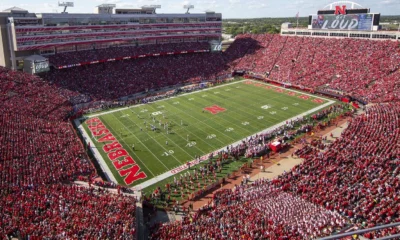

Featured
/ 3 days agoFan Guide to the Red-White Spring Game
Nebraska fans are set for a thrilling Saturday at Memorial Stadium for the annual...
-
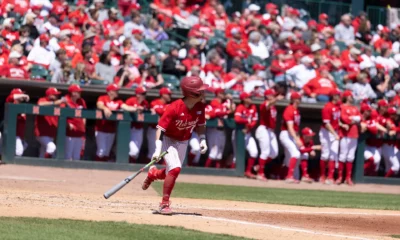

Baseball
/ 1 week agoHuskers Command Series Victory with a Resounding Win
In a spectacular show of force, Nebraska equaled its highest run tally of the...
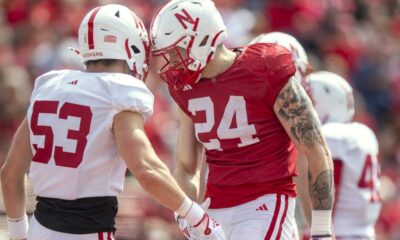



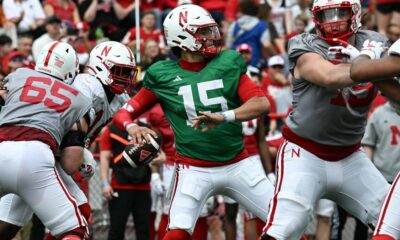



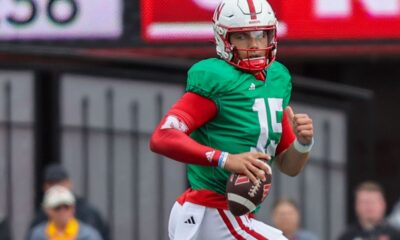



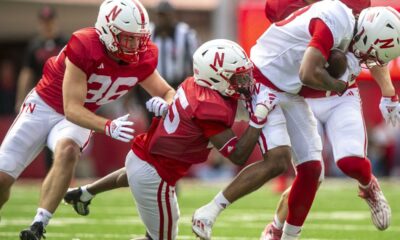







You must be logged in to post a comment Login